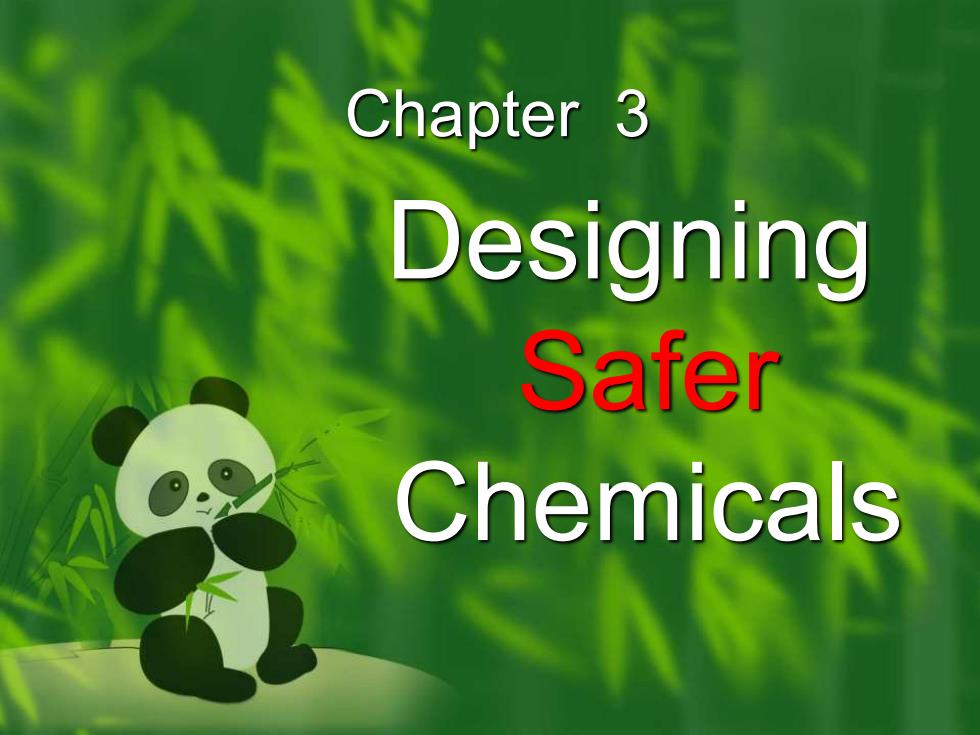
Chapter 3 Designing Safer Chemicals
Chapter 3 Designing Safer Chemicals
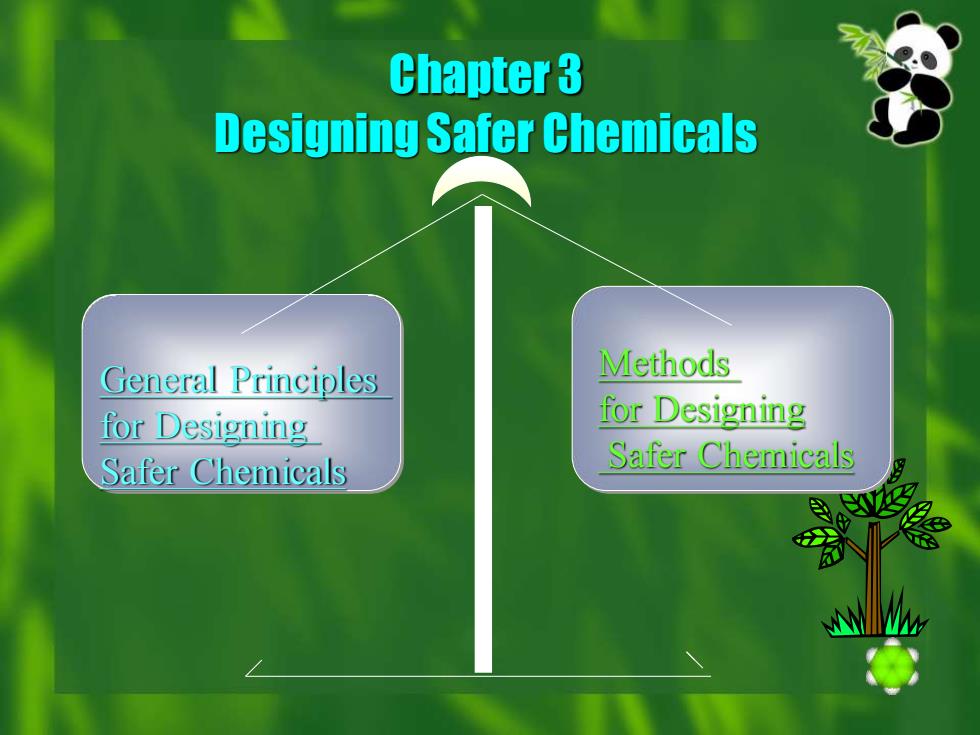
General Principles for Designing Safer Chemicals Methods for Designing Safer Chemicals Chapter 3 Designing Safer Chemicals
General Principles for Designing Safer Chemicals Methods for Designing Safer Chemicals Chapter 3 Designing Safer Chemicals
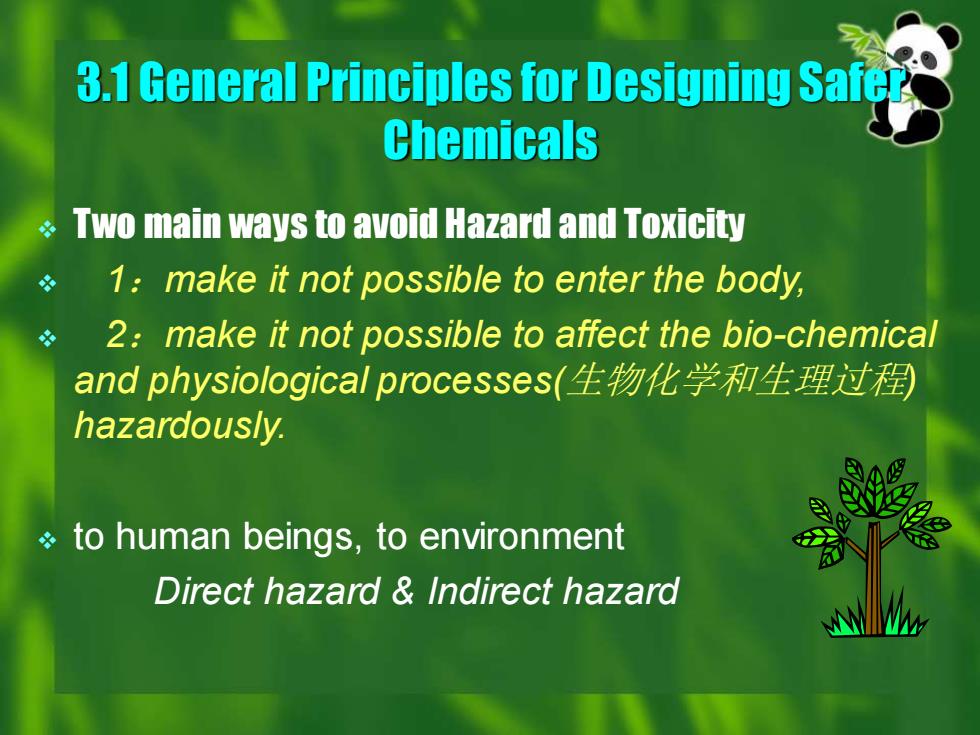
3.1 General Principles for Designing Safer Chemicals ❖ Two main ways to avoid Hazard and Toxicity ❖ 1:make it not possible to enter the body, ❖ 2:make it not possible to affect the bio-chemical and physiological processes(生物化学和生理过程) hazardously. ❖ to human beings, to environment Direct hazard & Indirect hazard
3.1 General Principles for Designing Safer Chemicals ❖ Two main ways to avoid Hazard and Toxicity ❖ 1:make it not possible to enter the body, ❖ 2:make it not possible to affect the bio-chemical and physiological processes(生物化学和生理过程) hazardously. ❖ to human beings, to environment Direct hazard & Indirect hazard
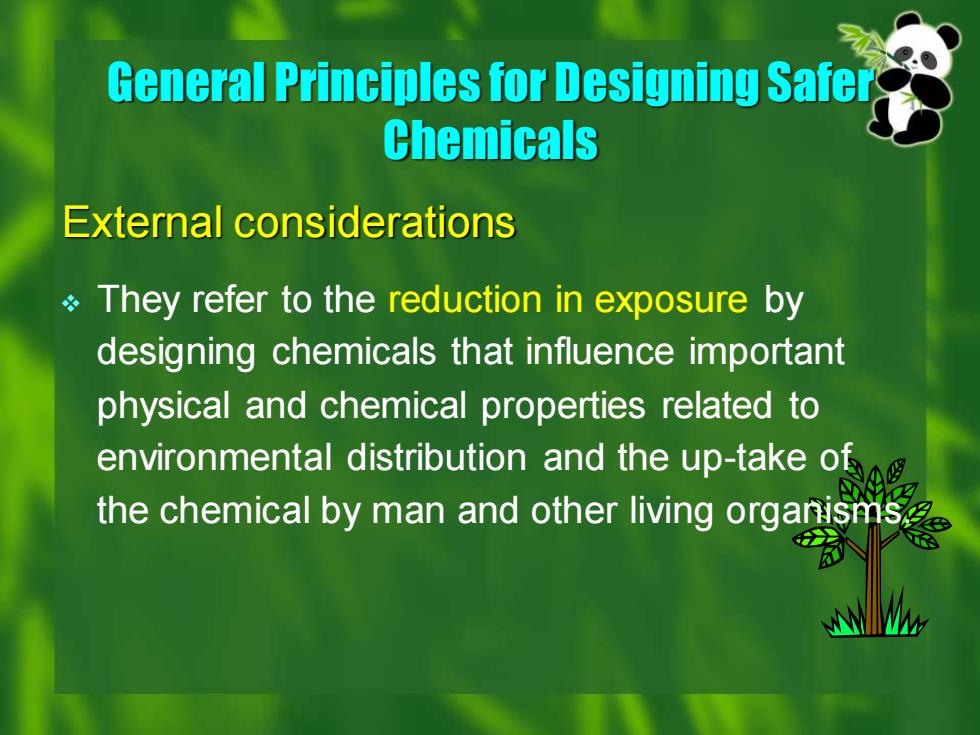
❖ They refer to the reduction in exposure by designing chemicals that influence important physical and chemical properties related to environmental distribution and the up-take of the chemical by man and other living organisms. External considerations General Principles for Designing Safer Chemicals
❖ They refer to the reduction in exposure by designing chemicals that influence important physical and chemical properties related to environmental distribution and the up-take of the chemical by man and other living organisms. External considerations General Principles for Designing Safer Chemicals
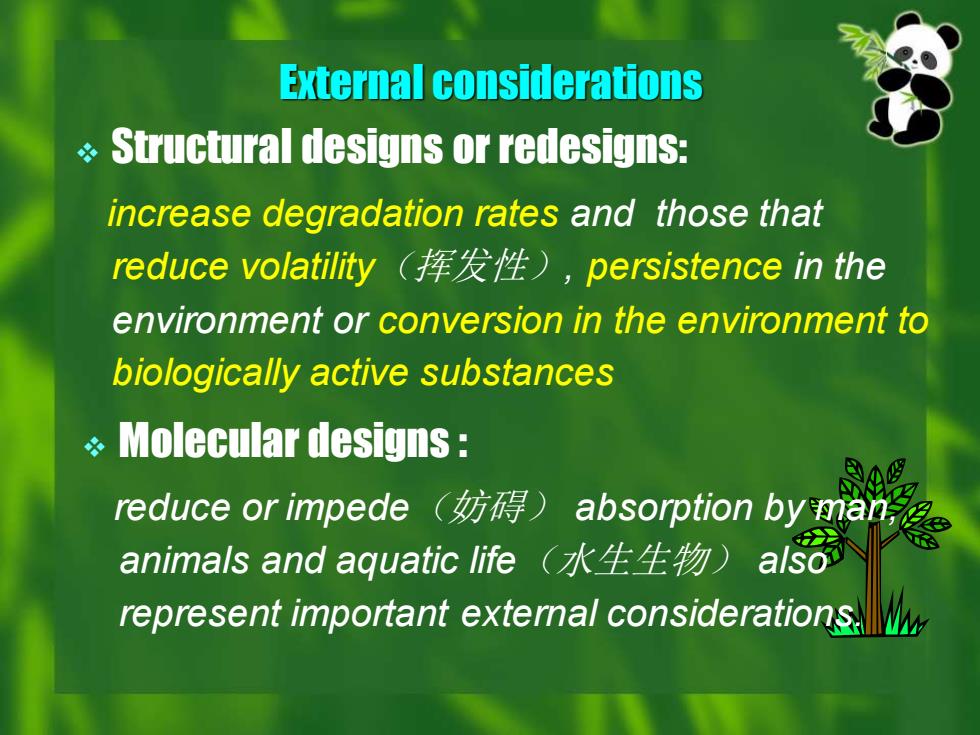
❖ Structural designs or redesigns: increase degradation rates and those that reduce volatility(挥发性), persistence in the environment or conversion in the environment to biologically active substances External considerations ❖ Molecular designs : reduce or impede(妨碍) absorption by man, animals and aquatic life(水生生物) also represent important external considerations
❖ Structural designs or redesigns: increase degradation rates and those that reduce volatility(挥发性), persistence in the environment or conversion in the environment to biologically active substances External considerations ❖ Molecular designs : reduce or impede(妨碍) absorption by man, animals and aquatic life(水生生物) also represent important external considerations
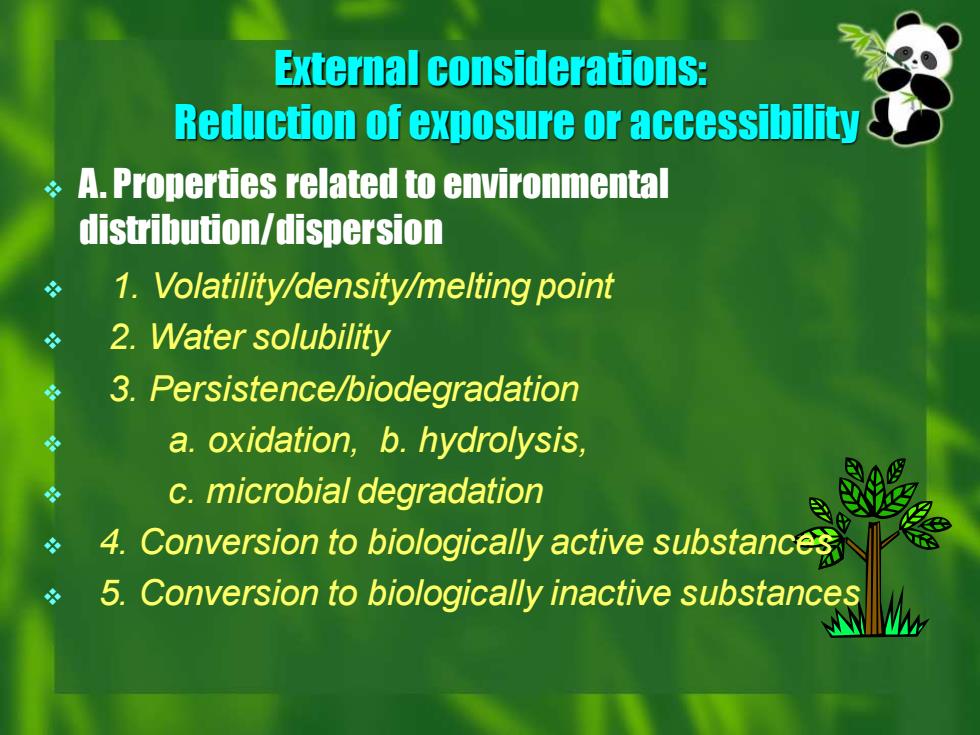
External considerations: Reduction of exposure or accessibility ❖ A. Properties related to environmental distribution/dispersion ❖ 1. Volatility/density/melting point ❖ 2. Water solubility ❖ 3. Persistence/biodegradation ❖ a. oxidation, b. hydrolysis, ❖ c. microbial degradation ❖ 4. Conversion to biologically active substances ❖ 5. Conversion to biologically inactive substances
External considerations: Reduction of exposure or accessibility ❖ A. Properties related to environmental distribution/dispersion ❖ 1. Volatility/density/melting point ❖ 2. Water solubility ❖ 3. Persistence/biodegradation ❖ a. oxidation, b. hydrolysis, ❖ c. microbial degradation ❖ 4. Conversion to biologically active substances ❖ 5. Conversion to biologically inactive substances
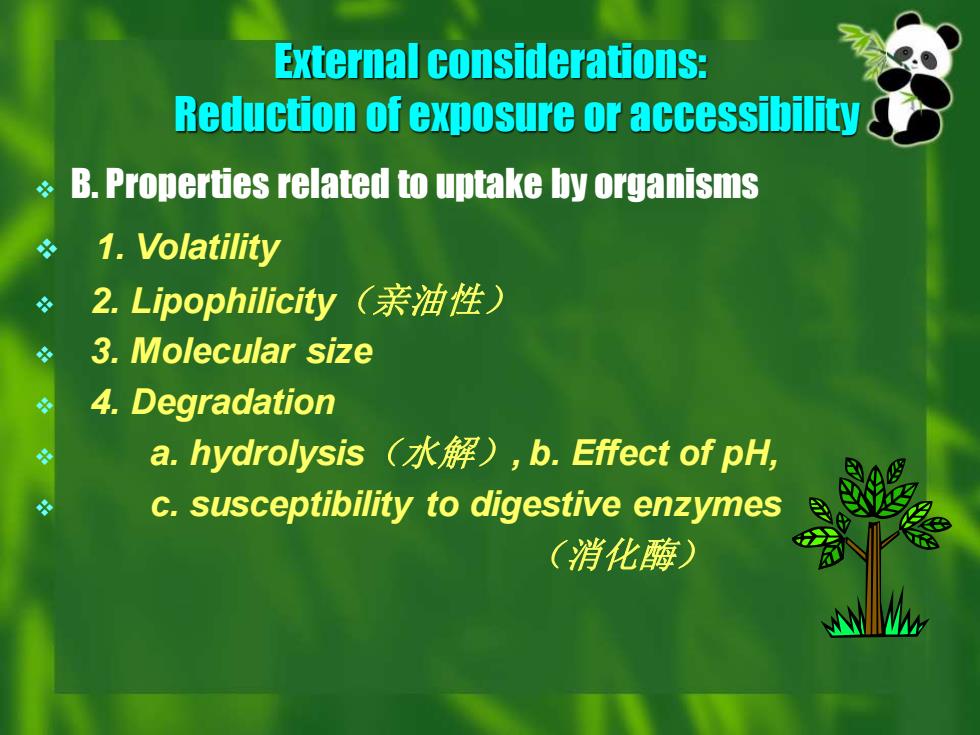
❖ B. Properties related to uptake by organisms ❖ 1. Volatility ❖ 2. Lipophilicity(亲油性) ❖ 3. Molecular size ❖ 4. Degradation ❖ a. hydrolysis(水解), b. Effect of pH, ❖ c. susceptibility to digestive enzymes (消化酶) External considerations: Reduction of exposure or accessibility
❖ B. Properties related to uptake by organisms ❖ 1. Volatility ❖ 2. Lipophilicity(亲油性) ❖ 3. Molecular size ❖ 4. Degradation ❖ a. hydrolysis(水解), b. Effect of pH, ❖ c. susceptibility to digestive enzymes (消化酶) External considerations: Reduction of exposure or accessibility
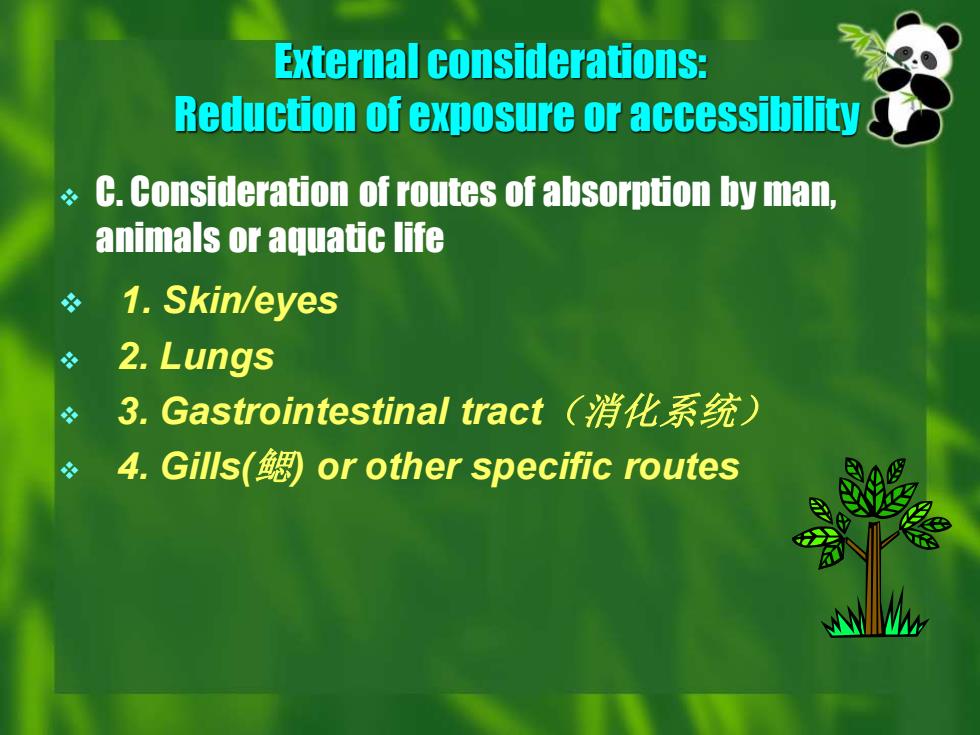
❖ C. Consideration of routes of absorption by man, animals or aquatic life ❖ 1. Skin/eyes ❖ 2. Lungs ❖ 3. Gastrointestinal tract(消化系统) ❖ 4. Gills(鳃) or other specific routes External considerations: Reduction of exposure or accessibility
❖ C. Consideration of routes of absorption by man, animals or aquatic life ❖ 1. Skin/eyes ❖ 2. Lungs ❖ 3. Gastrointestinal tract(消化系统) ❖ 4. Gills(鳃) or other specific routes External considerations: Reduction of exposure or accessibility
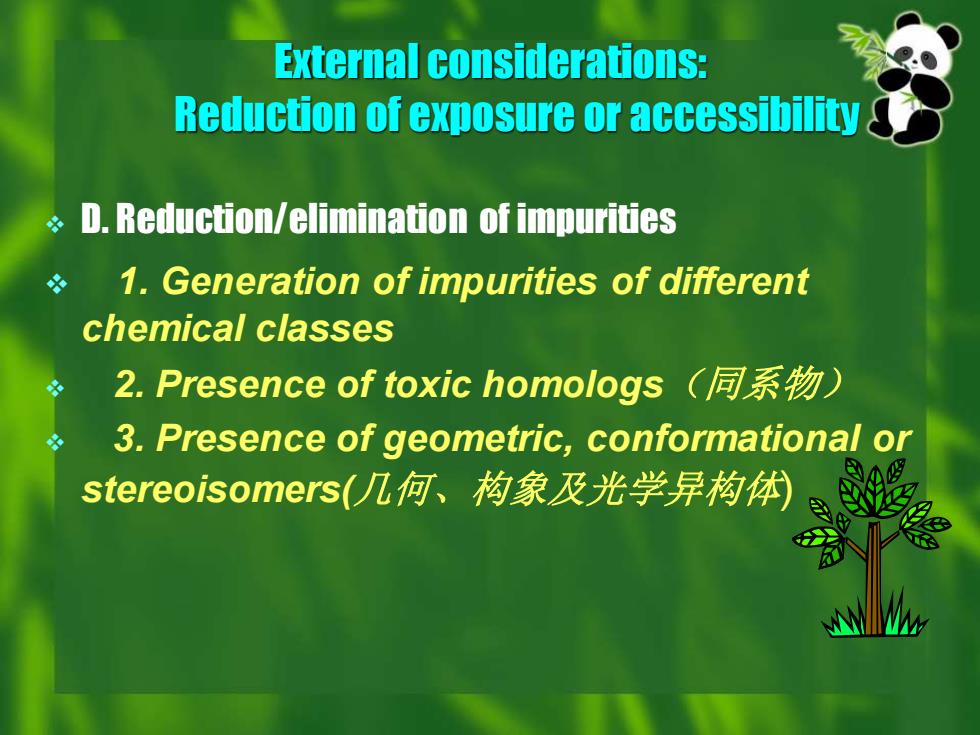
❖ D. Reduction/elimination of impurities ❖ 1. Generation of impurities of different chemical classes ❖ 2. Presence of toxic homologs(同系物) ❖ 3. Presence of geometric, conformational or stereoisomers(几何、构象及光学异构体) External considerations: Reduction of exposure or accessibility
❖ D. Reduction/elimination of impurities ❖ 1. Generation of impurities of different chemical classes ❖ 2. Presence of toxic homologs(同系物) ❖ 3. Presence of geometric, conformational or stereoisomers(几何、构象及光学异构体) External considerations: Reduction of exposure or accessibility

❖ Bioaccumulation(生物集聚)or ❖ Bio-magnification (生物放大): ❖ It refers to the increase of tissue concentration of a chemical as it progresses up the food chain. External considerations:
❖ Bioaccumulation(生物集聚)or ❖ Bio-magnification (生物放大): ❖ It refers to the increase of tissue concentration of a chemical as it progresses up the food chain. External considerations: